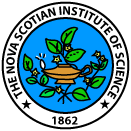
MEETINGS
MEMBERSHIP
PROCEEDINGS
ABSTRACTS
STUDENTS
LIBRARY
EXECUTIVE
BROCHURE
HALL OF FAME
HISTORY
LINKS
Monthly programmes and abstracts of meetings of the NSIS
| 1998–1999 1999–2000 2000–2001 2001–2002 |
2002–2003 2003–2004 2004–2005 2005–2006 |
2006–2007 2007–2008 |
Speaker List (1998–present)
1 October 2007
Nuclear Energy and the Post-Petroleum Future
Herschel Specter, RBR ConsultantsThe depletion of reserves plus the increasing prices of oil are prompting more research into other types of energy sources. Relationships between energy and the environment, and of our overall energy systems will be explained. Ideas for how we can operate without oil as we make the transition to a post-petroleum future will be given with a special emphasis on the increasing role of electricity in transportation and space heating including its relationship to conservation. The role of nuclear power in a mix of energy sources, renewable and otherwise, will be presented including the results of the speaker's recent study of possible accident/terrorism threats to nuclear power plants.
5 November 2007
Baking the Bedrock - Why the Halifax Slates have "the Pits"
Rebecca A. Jamieson, Department of Earth Sciences, Dalhousie UniversityAbout 380 million years ago, a large body of granite magma (the South Mountain Batholith) intruded the sedimentary rocks that underlie what is now Halifax. Heat from the magma was transferred into the surrounding rock, forming a "baked zone" (contact aureole). New minerals formed in the baked zone by solid-state metamorphic reactions, with higher-temperature minerals closer to the granite contact. The first appearance of the key minerals andalusite, biotite, and cordierite can be used to define "isograds" that correspond to variations in temperature and rock composition. Two different isograd sequences are observed. Cordierite, which defines the outer limit of the baked zone in both cases, is marked by characteristic weathering pits in slates. Following cordierite, biotite and then andalusite appear in the Point Pleasant Park - Purcell's Cove area. In contrast, andalusite appears before biotite in the central Halifax peninsula, including the vicinity of the Dalhousie campus. The latter sequence is very unusual and is interpreted to reflect extremely aluminum-rich rock compositions. Raman spectra of graphite in the Halifax slates suggest metamorphic temperatures of about 350°C in the outer baked zone and 560°C at the granite contact. Pyrrhotite, an easily-weathered iron sulphide mineral linked to acid rock drainage, is widely distributed both within and beyond the contact aureole.
3 December 2007
Time: 7:30pm
Location: Nova Scotia Museum of Natural History
Speaker: Daniel O'Halloran, O'Halloran Campbell Consultants Ltd.
Title:"In-stream Tidal Power in the Bay of Fundy"
The presentation will provide an overview of:
* existing in-stream turbine concepts and developments
* planning for installations in the Bay of Fundy
* reference to the Strategic Environmental Assessment (SEA) currently
underway
* reference to the NS Department of Energy's current Request for Proposals
(RFP) for turbine demonstrations
* some physical topics relating to turbine installation in the Bay of Fundy.
Winter 2008
7 January 2008Time: 7:30pm
Location: Alumni Hall, University of King's College (map)
Panel Discussion
Title:"Climate Change- Impacts to Nova Scotia"
| Panel Disussion: | Climate Change: Impacts to Nova Scotia |
Panellists:
| |
Moderator:
| |
4 February 2008
Time: 7:30pm
Location: Nova Scotia Museum of Natural History
Speaker: Christine Chambers, Department of Pediatrics and Psychology, Dalhousie University
Title:"Childhood Pain"
3 March 2008
Time: 7:30pm
Location: Nova Scotia Museum of Natural History
Speaker: Tanya Peckmann, Department of Anthropology, St. Mary's University
Title:"Identifying human remains with Forensics"
7 April 2008
Time: 7:30pm
Location: Nova Scotia Museum of Natural History
Speaker: Jon Sweeney, Canadian Forestry Service
Title:"The Brown Spruce Longhorn Beetle problem"
5 May 2008
Annual Dinner and General Meeting
Time of the talk: 8:00pm
Location: University Club, Dalhousie University
After Dinner Speaker: Gordon Fader: Atlantic Marine Geological Consulting Ltd.
Title:"The Story of Halifax Harbour"
Please report broken links to the webmaster.